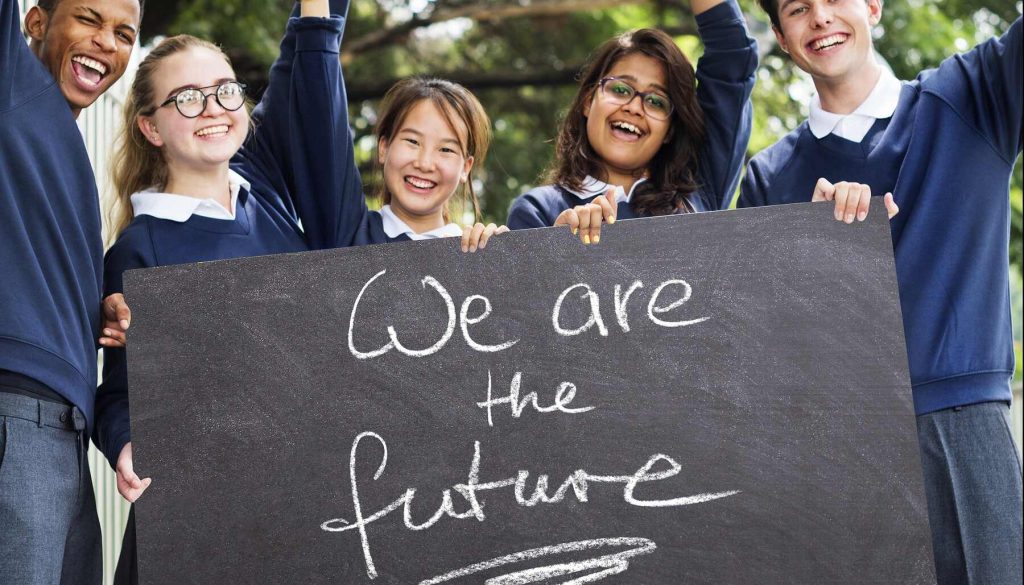10 Best Colleges for Blind and Deaf Students
Find your perfect college degree
In this article, we will be covering...
Preparing for college is a daunting task, and it is even a very complicated process for deaf and blind students. Enrollees with these disabilities, therefore, should start their preparation early.
It is crucial to start considering a career path as early as the first year of high school. That way, you get to begin exploring your options and identify which institutions are suitable for your needs.
As you begin to plot your transition plans, it is best to approach your Individual Education Program (IEP) team. Ask them about your possible options.
Your interests may lead you to a two-year college, a vocational school, or even a four-year university. Nonetheless, planning early is critical in your college application plans.
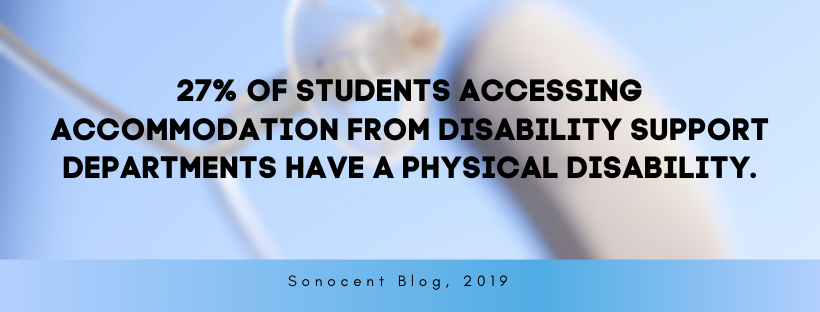
THE LOWDOWN:
If you are considering post-secondary education as a deaf, blind, or visually impaired student, the key to success is early planning. There are many college and university programs that focus on this type of disability. Most schools offer student organizations designed to help deaf or blind students navigate their way through the difficulties they may face.
So, do not be dismayed, college students! Deaf and blind students can earn their college degrees despite their disability and lead a productive and rewarding life while earning a lucrative living.
5 Colleges for the Deaf and the Hard of Hearing Students
Most colleges and universities in the US today have taken ample steps in creating learning environments, no matter the individual differences of the students. Below are some US colleges that offer programs for the deaf community that allow the deaf and hard of hearing students to get a full college experience still.
Gallaudet University

For more than 150 years, GU is the only college institution in the world designed to cater to the needs of the hearing impaired. This is the only school worldwide that offers BA, MA, and Ph.D. programs within an ASL-immersive setting. Located in Washington, DC, this institution is the most significant book publisher aimed at the deaf community.
GU is home to the prominent 1988 Deaf President Now movement, a notable student protest that commenced the Americans with Disabilities Act into realization.
GU also offers an intensive network of service projects and internship programs for its students. It also has yearly funding of $4.7 million intended for students and faculty research.
Rochester Institute of Technology
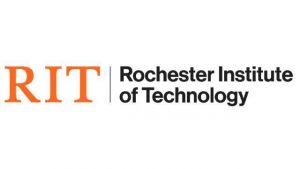
This is another model school that provides educational access to hearing-impaired students. The school is home to the National Technical Institute for the Deaf and offers notetaking, sign language interpreting services, FM systems and tutoring, and captioning. Some personal advisers can accommodate deaf students for job search services and career counseling.
SouthWest College for the Deaf

The SouthWest College for the Deaf (SWCD) – located in Big Spring, Texas, is a part of the Howard College district and is the only self-contained community college educational environment in the nation that serves deaf and hard of hearing students.
SWCD provides an exciting learning community for students seeking certificates for career training and workforce entry as well as associate degrees.
This barrier-free campus adapts the ASL as its primary mode of communication. The classes in the institution are aimed explicitly toward deaf and hard-of-hearing students and are delivered in sign language. The campus is inclusive and offers residential options for students.
Apart from academics, students are encouraged to join student organizations, athletic programs, residential activities, and internships to begin a lifetime of growth. *
California State University (Northridge)

You can find the National Center on Deafness at this university. With more than 200 deaf students on average, CSU is proud of its Disability Resources and Educational Services, the backbone of its Journey to Success program, where students are provided with personalized learning plans from college entry until after graduation.
This initiative has three phases. The freshmen students start in Transition Year, and they receive assistance as they adjust to college life. They are also provided with accessible services and mentoring programs with the instructors. The second stage is the Foundation Years.
The mentorship continues at this stage, but this time, students are trained to become independent and are encouraged to join in co-curricular activities. Lastly, the University and Beyond stage is the final phase. Here, students begin to learn skills in job advocacy and start to plot their life plans after college.
University of Wisconsin-Milwaukee
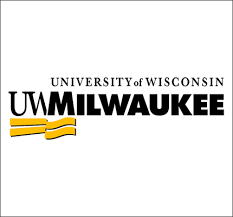
Of the 24,000 students enrolled in this institution, roughly 1,000 use ASL, and around 50 of these are deaf. The school has an Accessibility Resource Center intended for the hard of hearing and deaf students.
These students meet with an ARC counselor and are provided with their own personal VISA (Verified Individual Services and Accommodation). The VISA is given to the instructor at the start of a course and is annually updated when necessary.
College Preparation for the Visually Impaired
The CDC estimated there are approximately 12 million adults over the age of 40 with visual disabilities. 44% were successful in their workforce, while no more than 15% were able to obtain a bachelor’s degree from an accredited higher learning school. Studies also resulted in 29% of visually impaired persons sadly living below the poverty line.
Visually Impaired People When in Class
Blind or visually impaired students are expected to come face to face with a handful of unique challenges when in school. The good news is that numerous institutions these days are dedicated to helping these students overcome these struggles by providing them with different accommodations concerning their visual disabilities.
Unique and structured courses, along with distinct teaching strategies, allow the blind and visually impaired learners to receive proper education and, eventually, guide them towards being qualified professionals.
Visual Impairment Defined
People with visual disabilities fall under any of these three categories:
- Visually Impaired. The American Foundation for the Blind defines vision impairment as “visual acuity of 20/70 or worse in the better eye with the best correction or a total field loss of 140 degrees.” This impairment could be affected by one’s inability to adapt to darkness, light, glare, or contrasts.
- Legally Blind. Technically speaking, legal blindness is the level of vision loss that requires an individual a specialized education, proper job training, disability benefits, accommodating devices, and tax exemption.
- Total Blindness. The American Foundation for the Blind clarifies that total blindness is the inability to see anything with either eye. Total blindness is usually caused by eye diseases like glaucoma, cataracts, Stargardt’s disease, or Late-onset retinal degeneration. People with advanced diabetes are also prone to total blindness.
According to the World Health Organization, 2.2 billion people are visually impaired. They further state that a majority of those with impairments are over the age of 50.
Visually Impaired: Transitioning to College
When one is categorized as visually impaired or blind, transition planning is very critical. One teacher for the visually impaired noted that students having visual issues are expected to be independent by their senior year in high school.
However, there is still a need to meet a career counselor who will help a student come up with an Individual Plan for Employment. The goal of this is to discover post-school activities relative to the student’s career plans.
Accommodating Students with Visual Disability
Academic experts agree that the key to integrating blind students into a college classroom dynamic is the Universal Design of Learning (UDL). This method modifies and addresses course curricula that can help students with disabilities learn and receive instructions in a class setting.
To create universally accessible courses, there are some critical steps an institution must follow to guarantee that the campuses are inclusive.
- Course instructions have to be modified to meet the specific needs of a student. For the visually impaired students, large-font presentations, Braille materials, or auditory software are needed.
- Students with special needs should be given ample time to complete their coursework, show presentations, and undergo exams using an alternate format.
- Instructors should go the extra mile to work with visually impaired students to help them gain access to adaptive technologies and software.
Assistive Technology for the Visually Impaired
Thanks to specialized software and devices, academic barriers are entirely removed. Students with disabilities are now able to receive a proper education. The most common methods of adaptive technology for the visually impaired are:
- Screen Reader. This device utilizes a speech synthesizer that allows visually impaired students to read texts on-screen.
- Screen Magnification. As its name implies, this app zooms in graphics and texts automatically to assist students with limited vision.
- Video Magnifier. This is also called CCTV (closed-circuit television system) and works by projecting magnified graphics and tests on the screen of a handheld or mounted camera.
- Braille Embosser. This is secured to a printer so that documents can be printed in Braille.
- Braille Display. This uses pins in transcribing on-screen texts to tactile Braille.
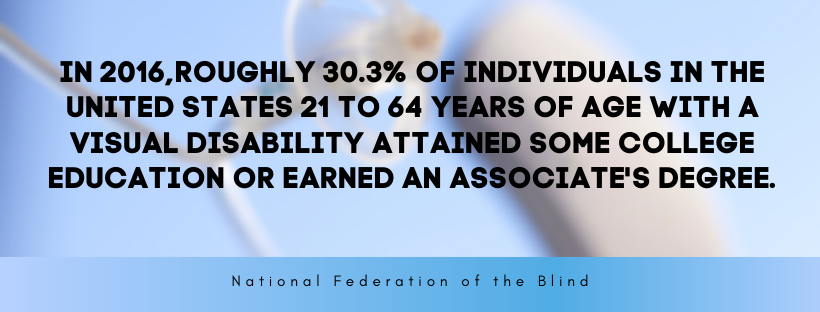
5 Colleges for the Blind and Visually Impaired
Many states across the US have schools designed primarily for students who are blind or visually impaired. Most of the traditional colleges across the country are well-equipped to accommodate students with visual disabilities.
University of Connecticut

The Center for Students with Disabilities, a division of Student Affairs at the University of Connecticut, is a vital resource. It has been in operation since 1967 and was initially known as The Physically Handicapped Program. It began as part of Public Health Services and has evolved significantly over the last 50 years.
Their initial projects were advocacy-related, such as constructing an elevator in the student union. That is no longer a problem, as they now see themselves as an institution that values the presence of students with disabilities and shows up with the necessary accommodations.
Beyond the essential capacities, they offer a program called Beyond Access, which is primarily for students with learning disabilities but can also benefit all students with disabilities.
For students who require additional assistance, this includes various support options such as learning coaches and specialized adaptive technologies.
University of Michigan-Ann Arbor
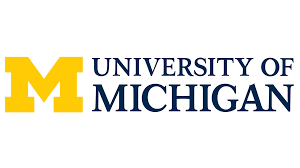
Just an hour away from Detroit, the public university not only has the best location but is globally known for being an advocate for college students with disabilities. The Office of the Services for Students and Disabilities serves as a model for other institutions that vow to support their students with disabilities.
Families can benefit from the Michigan Department of Education’s Low Incidence Outreach (MDE-LIO). MDE-LIO provides technical assistance and resources to local service providers to serve and improve the quality of education for students with visual impairments, deaf and/or hard-of-hearing students, and students with multiple impairments.
University of Arizona, Tucson
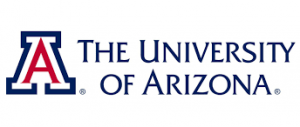
The Disability Resource Center at the U of A is a forerunner in providing such services. They believe in universal design, which entails creating environments and products usable by people of all abilities. As a driving practice, the campus adheres to that concept, which means fewer “accommodations” are required in the long run.
Furthermore, inclusion is considered from the beginning stages of construction. Their website offers seven universal design principles, all of which are related to the compilation/ curation of curricula. Even their museum designs exhibit with such regulations in mind.
The Disability Cultural Center, one of only a few in the country, is an extra-special feature of the University of Arizona campus. Not only is this a venue for events, but it is also a friendly hangout with plenty of open hours. In terms of schools for disabled students, the University of Alberta appears to have some of the most innovative resources.
College of Charleston

This college is deeply committed to giving access to students with disabilities. Professors and staff are highly encouraged to incorporate the Universal Design for Learning into the educational environment of the students.
They also have a program called SNAP (Students Needing Access Parity) to ensure that all students with disabilities are provided with specialized advising and personalized accommodations like assistive technology.
The College of Charleston’s Center for Disability Services (SNAP) is dedicated to making the campus accessible to ALL students. On their website, they provide links that further define accessibility and examples of how they respond to their students’ needs without taking away their agency and autonomy.
Nearly 850 of the approximately 11,000 blind or visually impaired students on campus use the support services provided by SNAP. They also assist other departments and campus-wide events in their efforts to collaborate on accessibility. This is critical for ensuring that all college offerings are accessible to people of all abilities.
SNAP also collaborates with student housing to ensure that students’ accessibility needs are met in their housing accommodations. Among their collaborations is a link to the counseling center, which provides private and group therapy services that consider the support needs of students with disabilities.
California State University, Fullerton
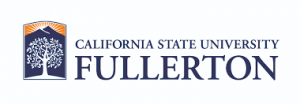
The university’s Disability Support Services is more than just your usual request forms and advising. One of the programs, the Abled Advocators Program, regularly meets to organize social and professional events, raise campus disability awareness, and ensure that all its students with disabilities experience what it feels like to belong at CSUF.
College Preparation for the Hearing Impaired
In the US, 9 million residents are recorded to have hearing impairments. Of this number, 100,000 are aged between 18 and 44. But how many of these can attend college?
The National Center for Educational Statistics reports roughly 20,000 hearing-impaired and deaf enrollees in post-secondary educational institutions each year.
The Common Categories of Hearing Loss
- Sensorineural Hearing Loss (SNHL) is called nerve-related hearing loss and can be a problem that exists in the inner ear.
- Conductive Hearing Loss occurs due to problems within the ear canal, eardrum, or middle ear. It is possible to have a mixture of both – Mixed Hearing Loss combines the two types of hearing loss mentioned above.
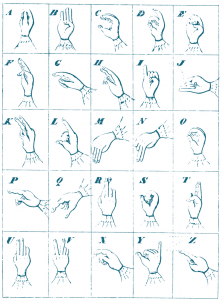
The intensity of these types of hearing impairments can create a massive impact on the academic success of the student. This is particularly challenging in mathematics and reading.
According to research, mild to moderate loss of hearing can cause a student to fall behind up to four grades.
Thankfully, education services, such as that provided by American Sign Language, are designed for the hearing impaired and are now available nationwide in a bid to prevent these common but challenging academic setbacks. This eventually led to a significant rise in deaf students enrolling in college.
Schools are also starting to acknowledge every student’s unique needs and the full range of services needed to meet these particular needs. For instance, accommodations vary on whether a student identifies himself as deaf or just has a slight hearing problem.
Some students who identify themselves as having hearing problems may or may not communicate using ASL (American Sign Language). Others who describe themselves as deaf share a standard American Sign Language and culture and may sometimes request an interpreter.
Those with hard hearing issues may opt for an assistive listening device. As schools start to be mindful of these differences, institutions have increased their sensitivity towards those with hearing impairments.
While these services are now practiced in most institutions, the level of effort put into them generally varies. Some provide mere services just to comply with disability laws. Others bring in new hearing technologies or even offer personal mentors so that they can meet the needs of the students who have a hard time hearing.
But despite these, students with hearing problems still come across a handful of challenges by the time they enter higher education.
Accommodating Hearing Impaired and Deaf Students
The constant advancement in technology, coupled with a better awareness of this disability, has further enhanced the creation of tools specially designed for educating students with deaf or hard-of-hearing disabilities.
Although the availability of a specific technology may vary by program or school, all institutions that enjoy federal funding are compelled to have their schools accessible to hearing-impaired students, according to Section 504 of the Rehabilitation Act of 1973.
Furthermore, the Americans with Disabilities Act stipulates that all public universities and colleges must ascertain that deaf and hard-of-hearing enrollees are provided with equal access to all school activities, regardless of funding.
To comply with these laws, institutions hire interpreters, utilize captioning, or invest in assistive listening devices; all these just to deal with the needs of the hard of hearing or hearing-impaired students.
Devices Used for the Deaf and Hard of Hearing Students
Below are some of the most common devices utilized by the hard of hearing and deaf pupils at universities and colleges.
Communication Access Realtime Translation (CART)
This is used to convert speeches into texts. Also called captioning, CART is done with the use of either a computer, a stenotype machine, or any relevant software to capture the words one is saying. The speech is then displayed on a screen and converted into text.
The beautiful thing about CART is that students can conveniently use this either on their smartphones or laptops. This can also be displayed on a projector or a considerable monitor, perfect for an entire class.
CART involves a stenographer, either live or through remote feeding. In remote CART, an audio source, like an internet phone service, is required for the speaker.
Once a speech is captured, it is directly transmitted to the student in a text format. The student no longer needs any special software to convert the speech since CART just provides the email link where the streaming text can be viewed.
CART is far better than interpreters and note-takers as well. Its accuracy rate for translation is 98.5%. Apart from living captioning in class, CART also allows students to obtain an electronic file of the transcription after class. However, this service is fee-based, and unfortunately, not all schools are willing to shell out money for the additional cost.
Assistive Listening Devices (ALDs)
These devices are designed to filter out background noise so that the sound is directed right to the student’s ear. They have a receiver, a transmitter, and a microphone.
While there are several types of transmission as to the type of ALD, the three most common ones include:
- Infrared System. This uses infrared lights and works by transmitting sound to the user’s ears using an earphone and a receiver. This technology is light-based, thus giving the user ample privacy because the sound doesn’t travel where the light doesn’t.
- FM System. This ALD type uses radio broadcast technology to transmit the teacher’s voice directly to the user. The teacher has a microphone that picks up the voice before it is directly transmitted to the student’s headphones, hearing aids, or cochlear implants.
- Inductive Loop System. For this system, an electromagnetic field is used to deliver sound. The teacher’s voice passes through an induction loop and onto the hearing aid telecoil. This induction loop is installed either on the floor or ceiling. Students without a telecoil-equipped hearing aid can still enjoy this system through a combination of a receiver and a headphone.
Understanding Assistive Technology
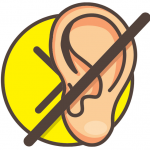
The deaf and the hard-of-hearing students have wholly taken advantage of the power of technology. Institutions and classrooms today use different software and hardware to help assist students with hearing problems. Online enrollees can also enjoy several online support services.
Today, e-textbooks are gaining more popularity among schools. This format of learning is utilized by more than half of US students attending college for at least one of their classes.
E-books are readily accessible on computers and various electronic devices, and along with added features, these formats are more advantageous, especially among deaf and hard-of-hearing students.
From interactive features like polls, note sharing, and even quizzes, instructors can seamlessly interact and collaborate with their students without having to go to school physically.
Digital recorders are also very helpful for students with moderate hearing loss. These recorders capture school lectures and discussions as sound files, which are then secured in a device. Students can then replay and review the record at their leisure. This is specifically helpful in large seminars or in locations where assistive listening devices are not available.
At present, most institutions have their own Assistive Technology Center, where you can find the most valuable resources for the hard of hearing and deaf scholars. The center is equipped with devices and support services to help students with disabilities deal with both their academic and extracurricular performance efficiently.
While ATCs are practically found in most primary schools, it’s still wise to inquire how extensive these services are since schools differ from each other.
Online Tools for the Deaf and Hard of Hearing Students
There are also software applications and online resources that the hearing impaired can utilize, whether via their devices or the school’s Assistive Technology Center. Some of the more popular ones for educating students include:
- AbleData is a resource center where you can find several solutions and assistive products designed for the dead and hard of hearing students.
- HearMore has several products created for independent living (on or off campus).
- iCommunicator provides independent communication through real-time translation, whether speech-to-sign language or speech-to-text.
- MotionSavvy is the latest invention and works as a two-way communicator that translates voice to text or sign to voice, using speech and gesture technology.

The Key Takeaway
Earning a college degree is, in itself, very challenging. And when you are blind and visually impaired or deaf, the obstacles are endless. Thankfully, you can find lots of colleges and institutions these days that accommodate people with disabilities.
ALSO READ:




